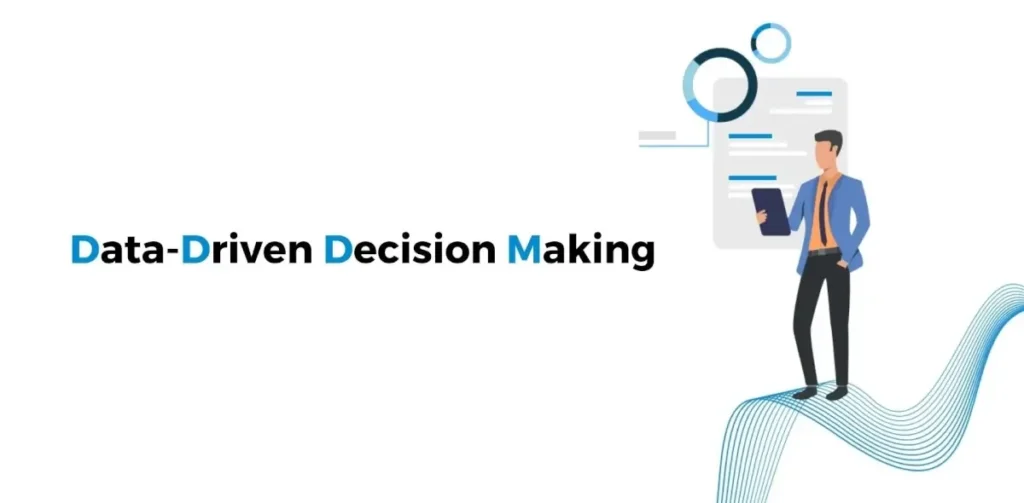In the digital age, information is power, and businesses that harness the power of data-driven decision-making gain a competitive edge. This article explores the significance of leveraging analytics for informed choices, the critical elements of a successful data-driven strategy, and how businesses can navigate the evolving landscape of big data.
Understanding Data-Driven Decision-Making
The Paradigm Shift in Decision-Making
Data-driven decision-making is a transformative approach that relies on analyzing relevant data to guide organizational choices and actions. It represents a shift from traditional, intuition-based decision-making to a more objective and informed process.
Uncovering Patterns and Trends
Analytics allows businesses to uncover patterns and trends within their data. Identifying insights provides a foundation for strategic decision-making, whether it’s customer behavior, market trends, or operational efficiencies.
Mitigating Risks
Analyzing data helps organizations identify potential risks and challenges. Businesses can proactively implement strategies to mitigate risks and enhance overall resilience by understanding the factors that may impact their operations.
Critical Elements of a Successful Data-Driven Strategy
Building Blocks for Effective Implementation
To leverage analytics successfully for decision-making, organizations must focus on key elements within their data-driven strategy.
Ensuring Data Accuracy
The accuracy of data is paramount. Organizations need to invest in data quality assurance processes to ensure that the information being analyzed is reliable and reflects the reality of the business environment.
Integrating Data Sources
Data-driven decision-making often requires the integration of data from various sources. Creating a centralized data repository allows for a comprehensive view, enabling more informed and holistic decisions.
Advanced Analytics and Predictive Modeling
Moving Beyond Descriptive Analytics
While descriptive analytics provides insights into what happened, advanced analytics and predictive modeling delve into why and what might happen. This forward-looking approach enhances the proactive nature of decision-making.
Embracing Machine Learning
Machine learning algorithms can analyze vast datasets, identify patterns, and make predictions. Embracing machine learning capabilities enables organizations to extract valuable insights that might be challenging to uncover through traditional methods.
Navigating the Big Data Landscape
Challenges and Opportunities
The rise of big data presents challenges and opportunities for organizations seeking to adopt a data-driven approach to decision-making.
Data Security and Privacy
As data volumes increase, ensuring the security and privacy of sensitive information becomes crucial. Implementing robust cybersecurity measures and adhering to data protection regulations are paramount.
Scalability and Infrastructure
Scalability is a common challenge as organizations accumulate large datasets. Investing in scalable infrastructure and cloud-based solutions allows businesses to adapt to growing data volumes without compromising performance.
Extracting Business Value
Big data provides an opportunity to extract significant business value. By leveraging analytics tools, organizations can turn raw data into actionable insights that drive innovation, improve efficiency, and enhance overall business performance.
Real-Time Decision-Making
Advancements in technology enable real-time data processing. This capability empowers organizations to make decisions on the fly, reacting swiftly to changing circumstances and gaining a competitive advantage.
The Future of Data-Driven Decision-Making
Embracing Continuous Evolution
As technology advances, the future of data-driven decision-making holds exciting possibilities and new challenges.
Artificial Intelligence and Automation
Integration of AI
Artificial intelligence (AI) integration is poised to revolutionize data-driven decision-making. AI algorithms can analyze data at a scale and speed beyond human capacity, providing more accurate and timely insights.
Automation of Routine Decisions
Routine and repetitive decisions can be automated through AI, allowing human decision-makers to focus on more complex and strategic aspects of the business.
Conclusion
In conclusion, data-driven decision-making is not just a trend; it’s a fundamental shift in how organizations operate and thrive. Businesses can unlock the full potential of their information by understanding the importance of analytics, focusing on critical elements like data quality and advanced analytics, and navigating the challenges and opportunities presented by big data. The future of data-driven decision-making holds the promise of further innovation, integration of AI, and the ability to make real-time decisions that propel organizations toward success in an ever-evolving landscape.


